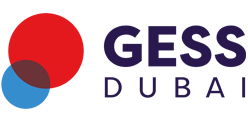MENA’s Private Education Sector: A Burgeoning Market
“Probably the greatest social challenge for all of us is our youth – because they are our future. Without appropriate education and guidance, they will be lost souls, easily manipulated, and prone to being turned into a destructive element in society,” Abdul Latif Al Zayani, the secretary-general of the Gulf Cooperation Council (GCC), said earlier this year at an event held at Cambridge University on August 16.
The importance of focusing on the education of Arab youth stems mainly from the fact that their percentage in the Arab world is quite high, with the number of youth under 25 constituting more than half of the population in the GCC.
With an ever increasing young generation, and the number of students tapping on 12 million in the GCC this year, it is no wonder that investing in a country’s future starts with educating the budding generations, especially given the fact that over 21 million children do not attend schools in the Middle East and North Africa region (MENA), according to the U.N. This challenge, the U.N. believes, needs to be addressed if regional countries wish to advance and develop their societies going forward.
And this challenge is being taken seriously in the MENA region; the number of children failing to attend school in the region has decreased by nearly 40 percent over the past decade, according to the U.N. It is in that context, perhaps, that we can understand why the Arab region is one of the leading global spenders on education, according to the United Nations Educational, Scientific and Cultural Organization (UNESCO).
And leading the education sector in the MENA region is its private education industry, which is one of the most buoyant markets in the world.
Dubai, Abu Dhabi, and Doha markets lead the region, while Cairo is catching up with the trend by facilitating the opening of private international schools.
And as Dubai remains the region’s most sophisticated and competitive market, it is worth noting that countries such as Bahrain and Jordan are known for their well-established and quality education in private schools.
Many international schools, especially U.K. independent schools, are opening branches in the region mainly due to historical ties that many of the countries in the region share with the U.K.
The report below showcases the current state of the private school industry with a focus on British Schools in Dubai and Abu Dhabi presenting the recent trends, growth drivers, and challenges. The white paper also provides an outlook of the industry until 2025.
Education Sector in the MENA Region – Key Growth Drivers
There are many factors that make education projects attractive to both investors and operators, which include:
- The MENA region has one of the highest population growth rates in the world, an existing demographic profile with approximately 33 percent under the age of 15 and 21 percent between the ages of 15 and 24 years.
- The presence of a large number of expatriates in the GCC. Over 50 percent of the GCC population is made up of expatriates, resulting in demand for numerous syllabi and schools in the region, such as British, American, Indian etc.
- Government provision of schooling tends to be mostly in Arabic and of low quality, resulting in the recognition of fee-paying as an acceptable market practice for all society groups.
- The establishment of educational hubs in the region, and the emergence of ‘satellite campuses’ by global players in the region, such as Dubai Knowledge City, New York University, Paris-Sorbonne University in the UAE and Virginia Commonwealth University School of the Arts, Texas A&M University, Weill Cornell Medical College in Qatar, to name a few.
- High returns on education sector investments. An efficient private school can make around 20 percent net profit margins.
- Education, as social infrastructure sectors, is now seen as a legitimate asset class in their own right, and with this recognition the demand from institutional and private sectors continues to grow. Given the ongoing global economic crisis, both the traditional real estate and local courses offer limited scope to the investor and regional funds. Education projects supported by strong demand demographics rapidly attract funds and private investors looking towards new avenues of investment.
Economic & Demographic Profile
The MENA region is categorised by two very diversified groups in terms of income and population. On the one hand, we have the Gulf Cooperation Council (GCC) countries, which have some of the highest per capita levels in the world on small population bases (except Oman and Bahrain). Conversely, there are the other Arab countries, some of which have undergone recent regime change, with large population bases, low GDP per capita and significant sections of the population living below the poverty line.
And with such opportunities come big investments, especially in the education sector, which has been growing at a fast pace in the GCC over the past decade.
At the moment, there is more than $55 billion worth of education-related projects in the GCC alone.
According to a 2014 report by Booz & Co., the number of private schools in the GCC is set to double before 2020, reaching as much as 4 million schools, to accommodate the growing population in the GCC, mainly driven by the increased demand created by Saudi Arabia and the UAE.
In turn, the spending of parents seeking higher quality education for their children is also expected to see a jump by four times in the coming four years, reaching as much as $20 billion in 2020, versus what parents spent on their children’s education in 2010.
Why Focus on the Education Sector?
In the last few years, education has seen tremendous growth and has been one of the few sectors that have not been adversely affected by the downturn. This perceived immunity to economic cycles has made some view the education sector as ‘recession-proof.’
What is unusual is that education projects are considered to be traditional ‘defensive (inflationary) plays’ in many institutional global markets, offering low but firm yields. In the MENA region, the benefit is that these sectors retain their safe-haven status while providing returns that would usually fall in the opportunistic category. Prior to 2009, the region was best known for the number of real estate master plans with off-plan residential sales that were in motion. Following the abrupt cessation of sales as a direct impact of the financial crisis, this left many real estate developers struggling to attract those purchasers still in the market, and the even-more-limited availability of development finance.
The education sector, for which finance options are available, brought many developers in the region two immediate benefits: people want to live where there are schools and hospitals, and the emergence of sale and leaseback options to institutional investors as a means to access difficult-to-find cash.
Public Private Partnership in Education Sector
Due to large disparities in income and population, the rationale for purchasing power parity (PPP) in the GCC and other Arab countries is also very different. For the GCC the rationale for PPP is varied; the private sector is able to deliver projects with greater alacrity than the government, there is greater operational efficiency and quality improvement for education services provided, and, as a potential adjacent benefit, there can be a diversification of local stock markets through the offering of PPP funds through local bourses. For other Arab countries, the main driver is to bring in much-needed funding not available to those governments who suffer from a lack of resources. In both cases, governments, particularly those brought to power by the recent Arab Spring, understand that the provision of quality social infrastructure is a key demand from the populous.
However, the PPP model within MENA is still in its infancy, and there are a number of factors that contribute to the slow growth of PPP projects in the region. These include poor legal framework and enforcement, weak institutional capacity and developed PPP strategies, unrealistic revenue and cost estimations (indicating a paucity of proper financial and economic analysis), inappropriate sharing of risks, lack of a competitive procurement process, and public resistance to perceived pay subsidy removal as government jobs are co-opted by the private sector service providers.
The Demand for British Schools in Dubai and Abu Dhabi
In September 2016 Kent College Canterbury, advised by Colliers, opened its doors in Dubai completing a process that is the culmination of a significant amount of time and planning for entry into the competitive and profitable private education sector within the United Arab Emirates (UAE). Kent follows other U.K. private school luminaries like Repton (2007), Brighton (2011) and Cranleigh (2014).
Although British nationals represent roughly 2 to 3 percent of the student population, the British curriculum remains within the top three curriculums offered in the UAE. The popularity of the curriculum is because it is also favoured by other nationalities such as Indians, Pakistanis and nationals from Arab and Commonwealth Countries. The demand is further augmented when non-U.K. nationals are looking to attend higher education in the U.K. and studying the British curriculum in school is sometimes a prerequisite to entry.
Dubai English Speaking School (DESS) is the oldest British School in Dubai. It started from a room in a villa in 1963 with 10 pupils taught by parents and a British Army Officer. By the end of the academic year of 2014-15, schools offering the British curriculum stand at number one in Dubai and number three in Abu Dhabi, the business hub and capital city of the UAE respectively.
l Dubai – Out of a total of 255,000 private school students, British curriculum schools represent some 85,000 students (33 percent) followed by the Indian curriculum (31 percent) and the U.S. curriculum (18 percent).
l Abu Dhabi – Students enrolled in British curriculum schools represent 22 percent of the private sector student body, some 50,000 out of a total of 223,000 students in private schools in Abu Dhabi. Trailing behind are the U.S. curriculum (24 percent) and Ministry of Education (MoE) curriculum (23 percent).
With a long history, successful market entrants demand the British curriculum, and the private school sector is underpinned by strong fundamentals. There are opportunities and challenges which are highlighted in the sections below for the potential pitfalls to investors and operators.
Abu Dhabi and Dubai Demographic Growth – Still One of the Highest in the World.
- Dubai’s population stood at approximately 2.3 million at the end of 2014, registering a Compound Annual Growth Rate (CAGR) of 6.5 percent for the period 2005 – 2014. Colliers International estimates that the population of Dubai is expected to reach 4.6 million by 2025, subject to it maintaining the current growth rate patterns. However, if the population growth rate dropped to CAGR of 5.1 percent, which was observed for the period 2010-2015, the expected population of Dubai will reach 4.0 million. During 2005 – 2009, just before the global financial crisis, Dubai’s population was growing by a CAGR of 13.3 percent due to a boom in real estate sector.
- Abu Dhabi’s population stood at approximately 2.8 million at the end of 2015, registering a CAGR of 7.3 percent for the period 2005 – 2015. Colliers International estimates that the population of Abu Dhabi may reach 5.6 million by 2025, subject to it maintaining the current growth patterns. However, if the population growth rate dropped to CAGR of 5.9 percent (which was observed between 2010-2015), the expected population of Abu Dhabi would reach 4.9 million.
- By end of 2015, the population of Abu Dhabi Region was approximately 1.7 million, with a CAGR of 7.8 percent for the period between 2005 and 2015. Colliers International estimates that the population of Abu Dhabi is expected to reach 3.7 million by 2025, subject to it maintaining the current growth rate of 7.8 percent. However, if the population growth rate dropped to CAGR of 6.3 percent (which was observed between 2010-2015), the expected population of Abu Dhabi would reach 3.2 million.
High Prevalence of Generation X, Y & Z
- The population of UAE, especially that of Abu Dhabi and Dubai, predominantly consists of individuals that fall in Generation X (1965 – 1980), Generation Y (1981 – 2000) and Generation Z (2001 – present). This translates into a wide base of young families and children of school going age.
- Compared to the U.K. with 63.3 percent population belonging to Generation X, Y and Z, the share of Generation X, Y and Z in Dubai is 84.5 percent and in Abu Dhabi 88.2 percent, thus creating demand for schooling.
- The progression of Generation Z population and the rise in the number of dependents of Generations X and Y both imply a growing population of school going age.
- The expected growth and age profile of the population in Abu Dhabi and Dubai is expected to provide sustainable demand for the education sector in Abu Dhabi and Dubai for short to medium term. However, the recent drop in oil prices has led to many employers curtailing education allowances which directly affects parents’ ability to afford schools. This is expected to lead to higher demand for affordable schools in the future as students may be seen to move to cheaper schools in light of such developments.
British Curriculum; Not Just for the British
- As discussed earlier, the popularity of British curriculum schools rests not only due to the presence of British Nationals in the UAE, since it remains a popular choice amongst a number of other nationalities such as Pakistanis, Indians and nationals from different Arab and Commonwealth Countries.
- Although British nationals make up only 2 to 3 percent of the total population of the UAE, British curriculum schools command a share of 33 percent and 22 percent of the total private school students in Dubai and Abu Dhabi respectively, evidencing the wider acceptance of the curriculum.
- Statistics revealed that Pakistani students constitute the highest proportion of students enrolled at British curriculum schools in Dubai, followed by Indians and British nationals (most of which are of Pakistani, Indian or Arab origin).
- The proportion of Emirati students enrolled in private schools in UAE continues to grow amid an increasing preference of Emirati parents to enrol their children at private schools owing to considerations of quality. It is expected that a considerable amount of such students will enrol at schools offering the British curriculum.
Challenges: High Capital Cost
One of the key challenges faced while establishing quality schools in UAE is the high funding requirement. The typical cost of developing a school with a capacity of 1,800 – 2,000 students could range between GBP 47 million and GBP 60 million, provided that land is purchased upfront. In cases where land is leased, such development cost for a quality school could range between GBP 35 million to GBP 42 million (exclusive of finance costs).
Funding Options
Despite the fact that banks and other financial institutions actively seek investments within UAE’s education sector, they are looking to limit their exposure by lending only to players with proven track records. British operators contemplating entry into UAE’s market often struggle to secure project finance unless there is recourse to alternative cash flows. Further difficulties arise with the terms offered. Education investments are typically long-term investments contradicting a bank’s risk appetite which typically extends to a tenure that lasts between 5 – 7 years.
For first time entrants to UAE’s market, especially British Schools who don’t have enough financial resources, or are unable to make significant financial commitments due to a variety of reasons ultimately end up searching for private investors to enter into a licensing and operating agreement with the investor under which they are entitled a management fee. However, some of the other options include, operators forming and owning the operating company (OpCo) and the investor investing in the land and property (PropCo), or creating a Joint Venture (JV) with an investor. The various options available to British Schools based on availability of funds are:
- Outright purchase of the land
- Long-term lease of the land
- Land as equity investment by landlord
- Long-term lease of the land and shell-n-core structure from landlord / investor
- Creating a JV with a landlord / investor in equity partnership
- Signing a management agreement with a landlord / developer / investor
- However, each of these options has financial, operational and legal advantages and disadvantages and operators should seek professional advice before entering into any such agreement.
Attracting and Retaining Quality Resources
One of the major challenges facing operators is the ability to attract and retain quality staff to deliver on the promise of quality educational services. Operators desperate to recruit appropriately qualified staff have prompted a trend of poaching teachers and management staff from competitors. Consequently, the UAE has witnessed a considerable increase in teacher salaries, which indicates that an effective international recruitment process is imperative in order to achieve operational success.
The Market Gap?
Based on current population growth rate and share of British Curriculum Schools in Dubai and Abu Dhabi, by 2025, it is estimated that Dubai will require an additional 166,000 to 224,000 seats in private education sector out of which approximately 55,000 to 74,000 will be for British curriculum schools. Whereas, the Emirates of Abu Dhabi is estimated to require an additional 172,000 to 230,000 seats in private education sector out of which approximately 39,000 to 52,000 will be for British curriculum schools. However, the Abu Dhabi region is estimated to require an additional 130,000 to 173,000 seats in private schools out of which approximately 30,000 to 39,000 will be for British curriculum schools.
With an average size of 1,500 students per school, Dubai requires an estimated 37 to 49 new British Curriculum Schools by 2025 or roughly three to five schools every year.
With an average size of 1,300 students per school, the Emirate of Abu Dhabi requires an estimated 30 to 40 new British Curriculum Schools by 2025 or roughly three to four schools every year.
Affordability
So far, all the British schools that entered the UAE market, i.e., Repton (2007), Brighton (2011), Cranleigh (2014) and Kent (2016) are targeting high-income segment charging annual tuition fees ranging from GBP 8,000 to GBP 20,000 per annum.
However, in Colliers’ opinion, the next main market will be to target quality British education at an affordable price with tuition fees in the range of GBP 6,000 to GBP 12,000 per annum.
In Colliers’ experience, operators / investors can achieve more or less the same returns by investing in affordable schools, in comparison to investment in premium schools. This can be attributed to several factors such as reduced capital investment required to establish affordable schools, with relatively faster ramp-up and higher utilization rates, higher number of students per class, etc. In fact, demand for affordable schools is not only restricted to Dubai and Abu Dhabi, the main cities of the UAE but also exists in other emirates.
The private education sector market in UAE offers an attractive opportunity to investors and operators, especially those intending to offer the British curriculum. However, it is imperative to commit adequate time and resources to understand and gauge key financial, operational and legal risks associated with the sector prior to venturing into the market.
Mansoor Ahmed is the Director of Healthcare, Education and PPP MENA Region at Colliers International.
Read more: http://newsweekme.com/menas-private-education-sector-burgeoning-market/





